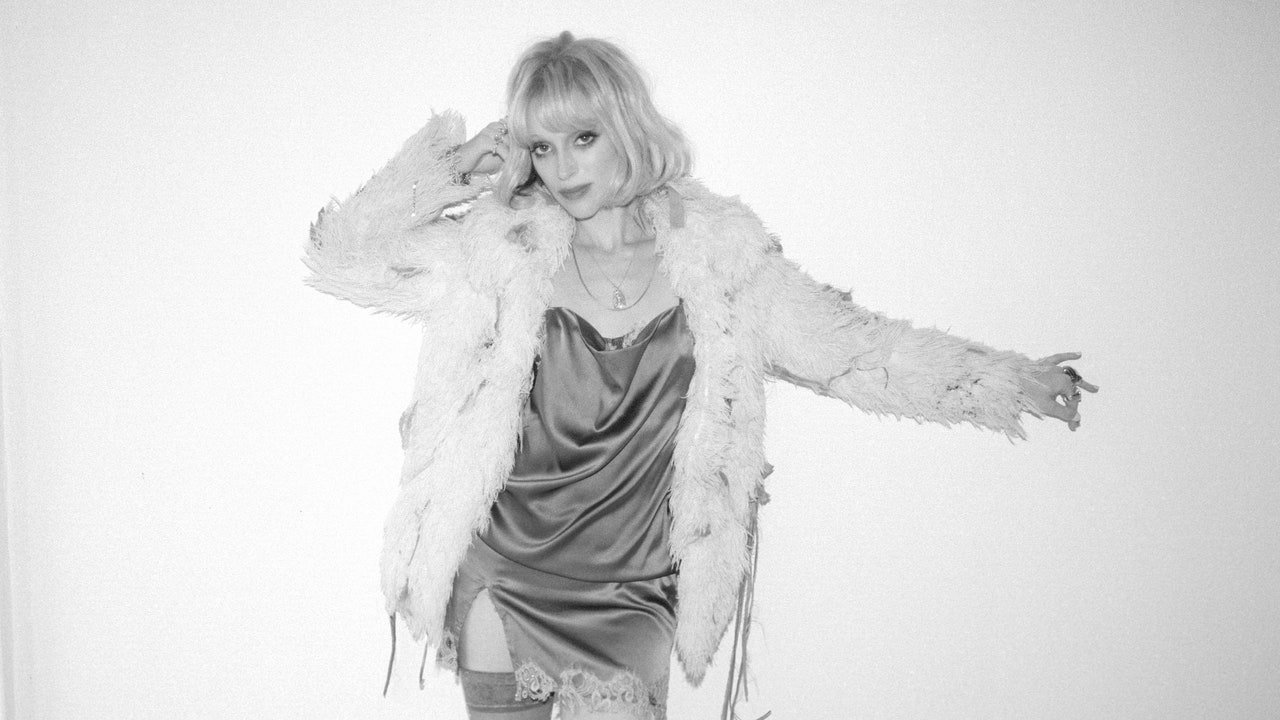At the end of February, a series of fly posters began springing up across a handful of U.S. cities. Featuring St. Vincent in a blonde, Candy Darling–inspired bob and a corduroy flared suit, she poses imperiously, legs turned out and arms crossed. With a campy flourish, a retro font asks: Who’s Your Daddy? “I’m putting my feet up and getting somebody to pour me a tequila, that’s the vibe,” says Annie Clark, describing the look for her sixth album, Daddy’s Home, released last Friday. “It’s BDE,” she adds, with a laugh. “Big daddy energy.”
Allow Clark to reintroduce herself, then: as a Warhol superstar; a drug-addled ingenue stalking the halls of the Hotel Chelsea; Gena Rowlands in her Cassavetes era, swanning around in a dressing gown. “Those very complicated heroines have always been very appealing to me,” Clark says of the fast-living women and ’70s knockabouts that inspired the record. “There’s something glamorous and tragic and incredibly strong about those characters I was writing about. And I’ve been that girl. I’ve been the girl wearing last night’s heels on the morning train,” she adds, in a nod to a lyric on the album’s second track, “Down and Out Downtown.”
It’s a spirit that infuses every aspect of the music, too, all of which was co-produced with Clark’s “kindred spirit” and previous collaborator Jack Antonoff, whose work with the likes of Lana del Rey, Lorde, and Taylor Swift has made him one of the most in-demand (and versatile) producers in pop. Where Clark’s previous records have either ricocheted between or synthesized different genres to create her own, unique sonic cocktail, Daddy’s Home wears its references on its sleeve—notably Sly & the Family Stone, Lou Reed, Funkadelic, and Pink Floyd—making for her smoothest, most cohesive record yet. “It’s the music that I’ve listened to more than anything,” she says of the groovy Wurlitzers, Mellotrons, and clavinets that color its warm, lightly psychedelic take on early-’70s pop-rock and funk.
“It’s not just about the music, either,” she continues. “Some of the best films that were ever made were made during that period of time. There really was something in the air. It seems like life was hard and people were struggling with all kinds of social tumult—civil rights, women’s rights, economic instability—and music really rose to the occasion. It spoke to the actual human condition of the times, and it didn’t feel escapist or overly idealistic, like the flower children. As a musician, that period of time feels like hallowed ground. I needed to earn my stripes before I felt like I could approach it and do it justice and play it. It’s way heavier shit.”
